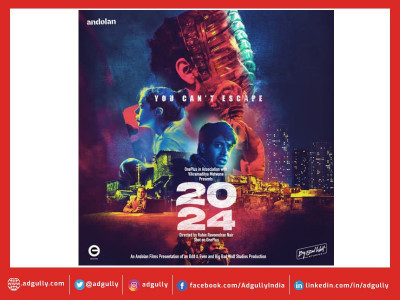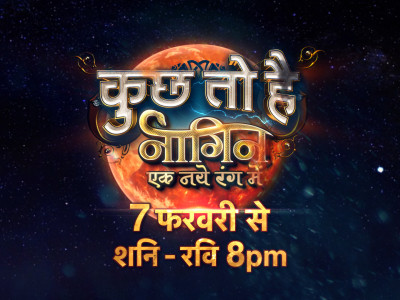Finite TV series - A passing phase or the way ahead for Indian TV?
Television series have for long been dominated by daily soaps that stretch on for years, through mindboggling twists and turns, and generation leaps – a formula that has worked well as the ratings piled up. However, now there seems to be a u-turn of sorts with growing number of finite series.
‘Naagin’ on Colors, which has continued to be the top show on Hindi GECs for weeks, is a finite show. Shows like ‘Pyaar Ko Ho Jaane Do’, ‘Kuch Toh Hain Tere Mere Darmiyaan’, ‘Mohi’, ‘Badtameez Dil’, ‘Meri Aashiqui Tumse Hi’, ‘Qubool Hain’, and ‘Doli Armaano Ki’, among others, are all finite series with a set number of episodes.
So, is this the beginning of a new trend among Hindi GECs? Will they follow their English counterparts and have a season-based format instead of a long, continuous narrative?
Finite series is not a new phenomenon on Indian television. During the early days of television in India, when Doordarshan had complete monopoly, shows usually comprised 13 episodes. Of course, there were exceptions like ‘Hum Log’, ‘Buniyaad’, ‘Yeh Jo Hain Zindagi’, ‘Shanti’ and ‘Swabhimaan’, among others.
The advent of private TV channels changed the viewing habits, with ‘Tara’ on Zee TV starting the trend of long-running series. Launched in 1993, ‘Tara’ was the first Hindi language drama series that ran for about five years. In the later years, the audience was glued to daily soaps like ‘Kyunki Saas Bhi Kabhi Bahu Thi’, ‘Kahani Ghar Ghar Ki’, ‘Kasautii Zindagii Kay’, etc., which also ran for years.
But the falling ratings over the years, saw the channels giving an abrupt closure to these shows. Among the current long-running series on air that has been doing well is ‘Sasural Simar Ka’, which has been among the top five shows on Hindi GECs. The show premiered in April 2011.
The channels have also begun moving away from the traditional saas-bahu sagas and are becoming more experimental with their contact. The recent times have seen series with different themes drawing eyeballs, which include ‘24’, ‘Ek Hasina Thi’, ‘Mahakumbh’, ‘Reporters’, ‘Fanah’, ‘Chakravartin Ashoka’ and ‘Maharana Pratap’, among others.
Some of the new finite series that are slated to hit the screens soon include, ‘Tamanna’ and ‘Meri Awaaz Hi Pechaan Hai’, among others.
What makes finite series click with the audience?
Curiosity that Season formats bring: ‘Parvarrish Season 2’ built up enough excitement, which would not have been possible had Season 1 not been popular. Season 2 of Anil Kapoor’s ‘24’, which saw tremendous response to the first season, has also been generating a lot of buzz as it readies to hit the small screen very soon. The anticipation about the fresh twists and turns in the new season, see audiences returning for more.
Something different from the saas-bahu kitchen politics: It has become too much of a good thing done to death. A tyrannical saas, a newly-wed bahu, a joint family with myriad over-dressed characters, all plotting against each other – the audience was bound to tire of the same old formula some time. In order to hold on to the audiences, the shows have introduced increasingly bizarre plot lines – return of characters killed off, generation leaps, plastic surgeries, vamps of different hues, even daayans, ghosts et al. Finites series will have tighter plot lines, strong characterisations and an anticipation about what happens next.
Indian audience is becoming more evolved: The Indian audience today has access to good international content – be it on the digital media or the English entertainment channels. Shows like ‘Orange is the New Black’, ‘Blacklist’, ‘Fargo, ‘How I Met your Mother’, and ‘Downton Abbey’, among others, have been accepted very well by the Indian viewers. Priyanka Chopra-starrer ‘Quantico’ also generated quite a buzz. The action-series is now gearing up for Season 2. With the exposure to such international content, the Indian audience expects similar production standards, story lines, characters and more.
Impact on actors
Creative satisfaction: For actors, finite series give them an opportunity to explore different roles. A TV actor, who refused to be named, said, “You reach a point of stagnation after playing the same role for years. There is nothing much to do and you cannot add anything as the character is expected to follow the do’s and don’ts list. Finite series enable actors to expand their horizon and become more versatile.”
Shashank Vyas, Jagya from ‘Balika Vadhu’, had also expressed that there was nothing new to explore in the character when he left the long-running show. He had also stated that while he was reluctant to shift out of the comfort zone that Jagya provided, he chose to quit the show and look for challenging opportunities.
Finite series = more roles: While a role in a long-running series offers stability, there is no guarantee that the character would not be cut off from the show. While a finite series might be on air for a limited period, the increasing number of such shows also widens the employment opportunities as new shows demand new characters. Be it veteran actors or fresh faces, there will be roles for all.
In the case of daily soaps, the lead actors have already established a bond, so replacing them could be risky. One would recall the strong reactions to Mihir’s departure from ‘Kyunki Saas Bhi Kabhi Bahu Thi’. ‘Kaisi Yeh Yaariyan’, which was quite popular among the youth, could not sustain much after the exit of Parth Samthaan.
Impact on directors and producers
While the opportunities grow, the challenges for the makers of shows also increase.
Casting and characterisation: Given the finite nature of the series, there might be a chance that the artists might not get enough time to create empathy and relatability for their characters from the audiences. Hence, the casting for such shows could be a tough task. They need to be precise. Popular actors would be much in demand and there could be pressure on their time and getting dates.
Building crisp story-lines: With the limited time period available, there would be fewer chances of digressing from the main plot. Each episode needs to be packed with enough action and interest to be able to keep attracting eyeballs for subsequent episodes. A couple of weak episodes could be enough to put off audiences. A case in point is ‘Reporters’, which had to wind up sooner than planned despite garnering decent eyeballs, given the fan following of lead actors Rajeev Khandelwal and Kritika Kamra. Hence, strong script writers are required.
The challenges notwithstanding, it is time to face the changing ecosystem today, where there is rise of OTT platforms, a fragmented media, strain on the advertising rupee and changing audience viewing preferences. The clash is now between the new and experimental versus the tried and tested. Which one gains prominence is an interesting watch.


















Share
Facebook
YouTube
Tweet
Twitter
LinkedIn